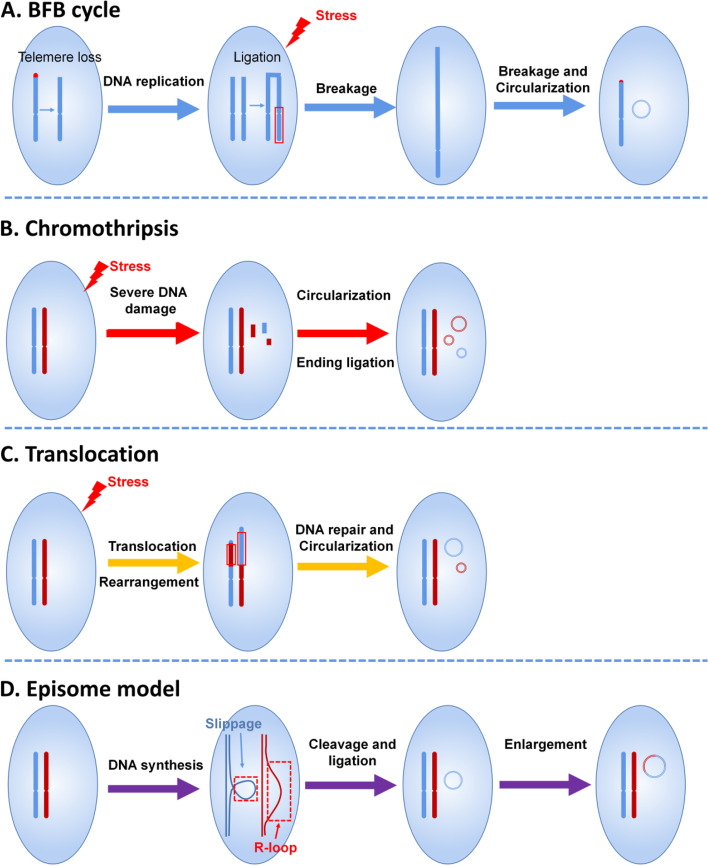Fig. 2.
Mechanisms of eccDNA biogenesis. A A dicentric anaphase bridge forms due to the loss of telomeres, and the telomere-free bridge is elongated by a repetitive cycle of replication, broken into random fragments under stress, and looped out to form eccDNA. B Chromothripsis, a type of severe DNA damage caused by exogenous stress, forms single- or double-strand breakages. With the DNA repair system, most of the DNA fragments are removed by different mechanisms, but some of the fragments are ligated and circularized into eccDNAs. C The translocation-deletion-amplification mechanism, which is frequently triggered by exogenous stimuli, is repaired or removed by the DNA repair system, but the retained or cleaved DNA fragments may generate eccDNAs. D Circular DNAs are generated during the DNA synthesis process in a DNA slippage and R-loop manner. Circular DNAs are produced by cleavage and ligation and can be enlarged by the integration of other DNA components, such as TEs and enhancers/promoters. BFB, breakage-fusion-bridge

